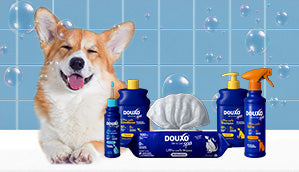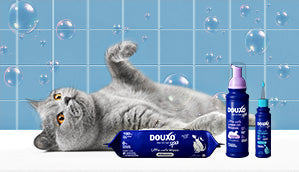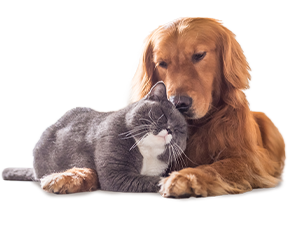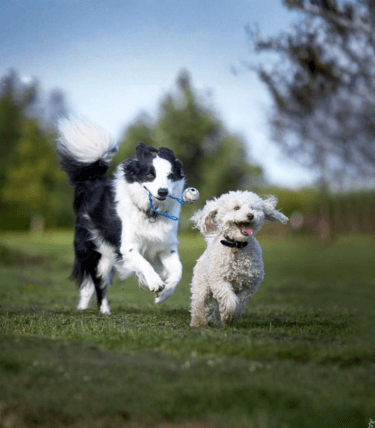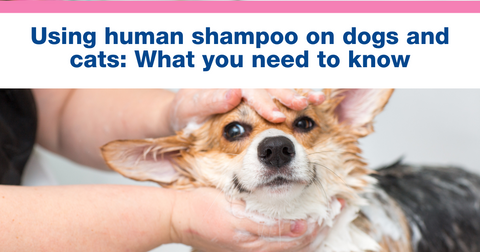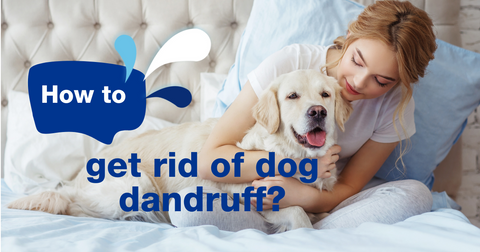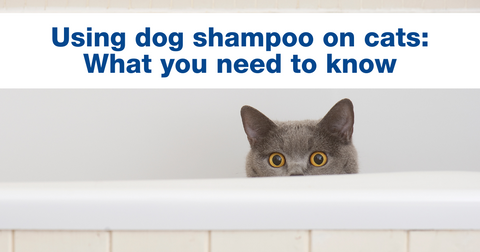
Help! How to deal with dog’s flea allergy?
Nobody wants uninvited little critters in their homes, and a flea infestation can be a complete headache for both dogs and their owners. Fleas can cause itchy, irritating bites to both dogs and humans.
However, some dogs have more extreme reactions if they are unlucky enough to be allergic to flea saliva. Flea allergies in dogs can cause severe skin reactions and lead to inflamed, painful and secondarily infected areas of skin.
Read on for more information about flea allergies and what steps you can take to try and protect your pup.

Fleas: all you need to know
Fleas are the most common external parasite found on dogs. Although over a hundred species of fleas exist, the most common type found on both cats and dogs is the misnamed Cat Flea, Ctenocephalides felis. Fleas have a complicated life cycle, and only the adult flea actually lives on your dog. Fleas can live up to two years, and female fleas can lay up to a couple of thousand eggs in this time – that’s an awful lot of fleas!
If your dog has fleas, it is a fact that the eggs, pupae and larvae will all be hiding in your home in scarily large numbers. The eggs hatch under warm conditions and so fleas are more prevalent in the summer months, but our modern heated homes now provide suitable temperatures for flea hatching even in the colder months, so there is no respite for our poor pooches.
What are the signs of a flea allergy in dogs?
An allergy is characterised by an over-reaction of the immune system, and flea allergic dermatitis (FAD) is caused by your dog having an inflammatory reaction to the saliva injected by the flea as it bites. FAD can be triggered by only one flea bite. So, even if your dog isn’t covered with fleas, don’t rule out a flea allergy! It is the most common allergy in dogs.
The common symptoms of FAD include excessive itching (usually seen as lots of scratching or licking, or chewing, rubbing), hair loss (alopecia) and red, sore patches of skin. These signs usually present on what is known as the ‘flea triangle’ in dogs: the area of skin from the middle of the back, along to the tail base and down the back legs. Severe cases can spread across the whole body. You may see live fleas, or specks of black known as flea dirt, but you may see no signs of fleas at all.

How do you treat flea allergies?
If you notice that your dog is scratching or licking more than usual, or has sore skin, book an appointment with your vet for a check-up. They will discuss your dog’s history with you, perform a full examination and may run some tests. They will also look for signs of fleas and flea dirt.
Dogs with FAD need two areas of treatment: firstly, to relieve the symptoms of skin disease, and secondly to eliminate fleas from them and their environment.
1. Relieve the itch
Itching (pruritus) is uncomfortable for our dogs, and can lead to excessive licking or scratching which will then irritate and inflame the skin, and even lead to secondary infections or self-inflicted wounds.
There are some options available to reduce or eliminate the inflammation and itching...
- Drugs – medications are often used to reduce inflammation and stop the itch-scratch cycle. Glucocorticoids and other immunosuppressing drugs are helpful to stop the body’s over-reaction to the flea bite. These medicines come in various forms including tablets, liquids and injections.
- Topical products – applying treatments directly to the skin means you can be certain they are targeting exactly where they need to be. There are many formulations available. Shampoos are helpful to remove dead fleas, dirt and debris from the skin. To get a prolonged contact with soothing ingredients, you can rely on leave-on formula such as mousses for large areas or pads for smaller areas.
The DOUXO S3 CALM line delivers soothing ingredients such as Ophytrium to the sore areas, calming and soothing the skin to relieve discomfort and helping repair the damaged skin respecting the microbiota.
2. Eliminate fleas on both dog and home
Dogs who suffer from flea allergic dermatitis require gold standard flea control – both for themselves, other pets in your household and in their home environment.
There are many flea products available, with different ingredients and in different forms (tablets, spot-ons, and collars) so it is well worth talking to your veterinary surgeon about the best product for your individual needs.
All pets in the house should be treated, to avoid any fleas jumping onto your dog from the others, and the house should be regularly treated as well.
Eggs, larvae and pupae all live in the house – mostly in bedding, soft furnishings and carpets. Repeated applications of a household spray may be needed to catch all stages of the fleas, and to ensure a repeat infestation does not occur.
In case of massive infestation, the use of a pet controller can be needed.

Summing up: flea allergies in dogs
- Flea allergies are a common skin problem in dogs.
- Flea allergies can cause severe skin reactions, even if there really is just one flea.
- Dogs with FAD will be very itchy and sore, especially over their lower back and hindlimbs.
- Treatment focuses on using either oral/injectable medicine, topical products or both to relieve the inflammation and itching, and eradicating fleas from your dog and their environment.
- Fleas can live in our homes all year round and vigorous prevention methods are necessary to prevent your dog having repeat reactions.
We recommend DOUXO® S3 CALM, as it provides tremendous value in relieving and repairing skin that’s been aggravated by allergens and insect bites - fleas included.
The DOUXO® S3 CALM Range...

1. Soothes Irritated, Itchy Skin
-
Flea bites often cause intense itching, redness, and irritation. The CALM range (shampoo, mousse, pads) is specifically formulated to reduce itching and calm inflamed, sensitive skin.
2. Supports and Strengthens the Skin Barrier
-
Flea bites disrupt the skin's protective barrier. The CALM products contain Ophytrium, a natural ingredient proven to soothe, rebalance, and fortify the skin ecosystem, helping it resist further irritation.
3. Restores Microbial Balance
-
Flea-infested skin can become prone to secondary infections. The CALM formula helps re-establish a healthy skin microbiota, reducing the risk of bacterial overgrowth.
4. Hydrates and Maintains Skin Health
-
Constant scratching and inflammation from fleas often strip the skin of moisture. CALM products hydrate and rebuild the skin, easing discomfort and promoting recovery.
5. Gentle, Safe Formulation
-
Free from soap, sulfates, parabens, nanoparticles, colorants, phthalates, and harsh fragrances - this range is hypoallergenic, pH-balanced, and veterinarian-formulated. Ideal for pets with delicate skin.
6. Multiple Application Options for Versatility
-
Shampoo for full baths, mousse for no-rinse leave-on comfort, and pads for targeted treatment (especially helpful post-flea treatment or for accessible areas)
If you’re looking for more expert pet skincare tips, why not explore our other articles online? And don’t forget, you can also sign up to our newsletter to receive all the latest news straight into your inbox!





